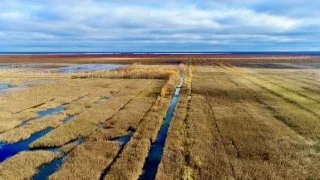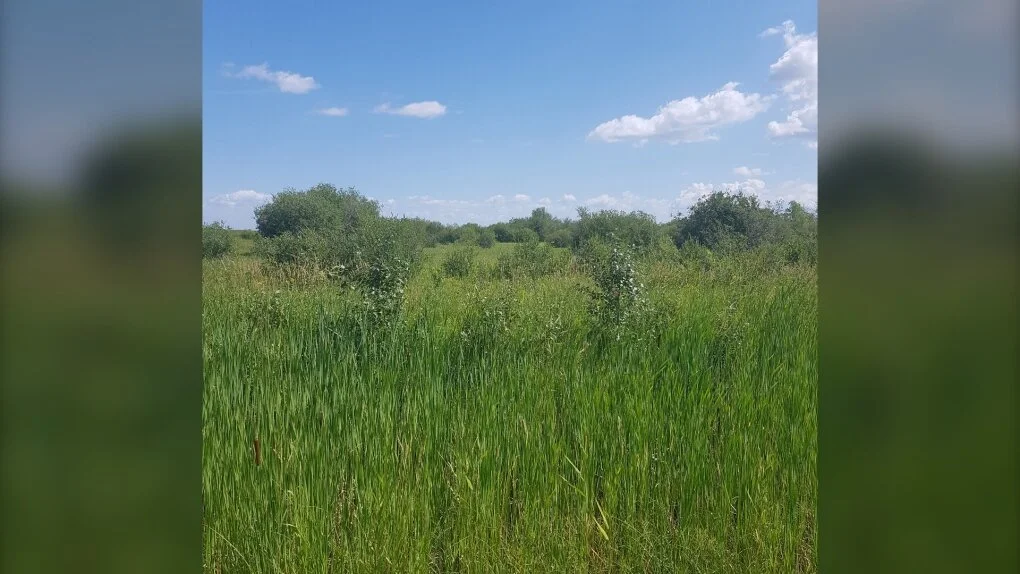Rivers are the veins of Earth through which nourishment flows—to both the natural and human worlds. They cradle vibrant ecosystems and sculpt our landscapes. They are the living henges we build so much culture, recreation, and commerce around. And their clarity, or lack thereof, points to their health, or lack thereof. And in many ways, our rivers’ health mirrors that of our own. In the expansive lands of Canada, many flow hale and lucid.
Drinking water, aquatic life at risk due to B.C.’s fire-ravaged summer: experts
Experts say the extent to which wildfires have burned across the province this year will have serious implications for the quality of B.C.’s watersheds and the ecosystems that rely on them. John Richardson, a Department of Forest and Conservation Sciences professor at the University of British Columbia, says with so many hillsides scorched by wildfires this year, there’s nothing to prevent incoming rain from creating a “debris torrent” — something which spells bad news for the province’s drinking water.
Seven things you should know about blue-green algae
It happens every summer: blue-green algae bloom into vast blankets of colourful scum in lakes, disrupting ecosystems and potentially exposing people to toxins. Blue-green algae, also known as cyanobacteria, act as single-celled microscopic plants fuelled by high temperatures and nutrients often found in chemical runoff.
Action needed as Canada loses nearly 300 football fields of grasslands daily
Canada’s iconic Prairie grasslands are in peril, but the Nature Conservancy of Canada (NCC) has sprung into action to try to save the vital ecosystems. Its Prairie Grasslands Action Plan proposes to conserve more than 500,000 hectares (more than 5,000 square kilometres) by 2030 —- six times the size of Calgary. In a recent interview with The Weather Network, Jeremy Hogan, NCC's director of prairie grassland conservation, said only 18 per cent of Canada's original grasslands remain. "We have taken the grasslands for granted a little bit. They're one of our most productive ecosystems in terms of food production, but also services like water storage, filtration [and] preventing droughts and floods," said Hogan.
New Funding Available for Manitoba Agriculture Producers and Processors to Support Sustainability Initiatives and Food Safety Improvements
The Water Use Efficiency stream provides funding for projects that help reduce the amount of water used by agri-processors in production and sanitation processes, treatment of wastewater prior to being disposed or returned to the municipal system or to the recovery of nutrients from wastewater. This funding aligns with the Manitoba government’s Water Management Strategy, which guides future actions, decisions and investments to protect the province’s water resources and ecosystems while sustainably growing the economy and communities. Funding is available for up to 50 per cent of the project cost, up to a maximum of $250,000 per project.
Are New Brunswickers ready for nature-based climate solutions?
Here's a snapshot of some of Canada's salty waterways harming ecosystems
A number of Canadian cities have exceeded acceptable chloride levels in watersheds in recent years, raising concerns about the impact on freshwater wildlife and other species. The problem largely stems from road salt and saline solutions, which have a chemical compound of chloride to keep roadways safe during winter weather.
A second chance to protect wetlands
Wetlands are among the most threatened ecosystems in the world. A new study, published in Nature, has found that the loss of wetland areas around the globe since 1700 has likely been overestimated. This is good news overall, however, the global picture hides significant variations, with several regions and distinct wetland types under significant levels of pressure. For instance, temperate river floodplains have been highly impacted while remote boreal-arctic peatlands remain comparatively unharmed. While wetland conversion and degradation has slowed globally, it continues apace in some regions, such as Indonesia, where large swaths of land are being cleared for oil palm plantations and other agricultural uses. This new global perspective on wetland loss can help prioritize conservation and restoration actions.
Electric vehicles promise environmental wins. But could there be environmental costs?
Lithium in particular, she pointed out, leads to a significant amount of water extraction, and can lead to contamination of water supply, which can also impact ecosystems and the species that depend on them. Canada doesn't currently produce lithium, though it has about 2.5 per cent of the world's known lithium deposits. That's a tiny share compared to countries like Bolivia, Australia, Chile and Argentina, not to mention that China controls most of the world's processing capability.
BEYOND LOCAL: Freshwater basins drying up increases threat to ecosystem, communities
When people use freshwater beyond a physically sustainable rate, it sets off a cascade of impacts on ecosystems, people and the planet. These impacts include groundwater wells running dry, fish populations becoming stranded before they are able to spawn and protected wetland ecosystems turning into dry landscapes. Developments in computer models and satellites have fostered a new understanding of how freshwater is being redistributed around the planet and have made clear the central role that people play in this change. This human impact is so significant that organizations like the United States Geological Survey are redrawing their water cycle diagram to include the impacts of human actions.
Wetlands are a natural remedy for Canada’s sick lakes
Chances are high that you saw it over the summer at your favourite lake: thick scum on the water’s surface, often resembling pea soup. Blue-green algae (also called cyanobacteria) can render water unsafe for swimming and often makes people, pets, livestock, and wildlife sick. In July, Nova Scotia listed 26 waterways suspected to have blue-green algae blooms. Officials with Alberta Health Services identified blue-green algae in areas of Camp Lake, east of Edmonton, and Haunted Lake (an ironic name for a place fouled by the sinister sludge), east of Red Deer. The Saskatchewan Health Authority issued a blue-green algae warning for Little Manitou Lake, southeast of Saskatoon. British Columbia’s Capital Regional District saw toxic algae blooms in three different lakes across two regional parks in August.
Health Canada recruits a Concordia professor for its Science Advisory Committee on Pest Control Products
Xianming Zhang, assistant professor of environmental chemistry in Concordia’s Department of Chemistry and Biochemistry, has been invited to join Health Canada’s new Science Advisory Committee on Pest Control Products. The panel of nine researchers from across the country will provide independent guidance to the Government of Canada’s Pest Management Regulatory Agency.
Researchers heading north to study glaciers in N.W.T., Nunavut
Nestled between jagged mountain peaks in Nahanni National Park Reserve, N.W.T., the Bologna Glacier stores water and serves as a smooth transportation corridor for animals like caribou, porcupines and wolverines. But, like ice all over the world, it's melting and shrinking in the warming climate, leaving the future uncertain for creatures that travel across it and ecosystems that exist below it — including the South Nahanni River, to which its melt water flows.
Coors Seltzer Supports Water Replenishment With New Acre Project
New Acre Project, an initiative delivered by ALUS that supports purpose-driven organizations to fund grassroots environmental stewardship projects, announces new funding from BEF (formerly, the Bonneville Environmental Foundation). The funding will support 100 New Acre™ project acres in Alberta, Canada, powered in part by Coors Seltzer’s mission to help protect and restore Canada’s waters.
What will climate change actually look like on the Prairies?
Though models indicate an overall increase in precipitation, future droughts and soil moisture deficits are projected to be more frequent and intense across the southern Canadian Prairies during summer by the end of the century under a high-emission scenario. So how does that work? When you look at the water supply chapter of our changing climate, timing is very important. David Sauchyn, director of the Prairie Adaptation Research Collaborative at the University of Regina, is a lead author of a report detailing the changes we can expect in the Prairies as our climate warms.
British Columbia developing plan to protect drinking water, ecosystems
Severe drought, wildfires, flooding and landslides in British Columbia last year show that responding to climate change requires focusing on water and strengthening natural defences provided by healthy watersheds, an expert says. “We’ve all learned that climate crisis is a water crisis,” said Oliver Brandes, co-director of the University of Victoria’s POLIS Project on Ecological Governance.
What’s in the water? USask grad student investigates environmental threat of contaminants in Saskatoon stormwater
University of Saskatchewan (USask) College of Engineering graduate student Hayley Popick and her research team are investigating how contaminants generated from the City of Saskatoon may be affecting the water supply and ecosystems of the South Saskatchewan River. “Stormwater can be as polluted as untreated wastewater or sewage when it enters our natural water bodies,” said Popick.
What’s missing from forest mortality projections? A look underground
In a new study, scientists conclude that the sideways flow of water through soil can have an important impact on how riparian forests respond to climate change. Models used to predict the future plight of forests typically don’t account for this factor — but they should, researchers say. “There hasn’t been a lot of attention on groundwater and how the movement of water from one location to another below ground can impact plants’ survival prospects, making some locations drier, and others wetter,” says lead author Xiaonan Tai, PhD, assistant professor of biological sciences at New Jersey Institute of Technology. “Groundwater is a hidden water source for ecosystems that people have neglected over the years: It is very hard to observe and quantify, just because we can’t see it. The contribution of our new research is to begin characterizing lateral groundwater processes and quantifying how much of a role they can have in terms of influencing the future of forests."
The Nature Conservancy of Canada is working to conserve two wetlands along Lake Winnipeg
The Nature Conservancy of Canada (NCC) is working to protect two ecosystems along Lake Winnipeg. The NCC said it is hoping to protect Breda Bay and Siglavik, calling the two ecosystems, "significant shoreline properties." The two areas near Gimli take up 45 hectares and the NCC said conserving them would impact the current and future health of the lake. "They represent one of the last natural areas along the southwest shore of Lake Winnipeg and we are working with local private land owners to conserve them for nature and people forever," said Cary Hamel, director of conservation for NCC’s Manitoba region.





















